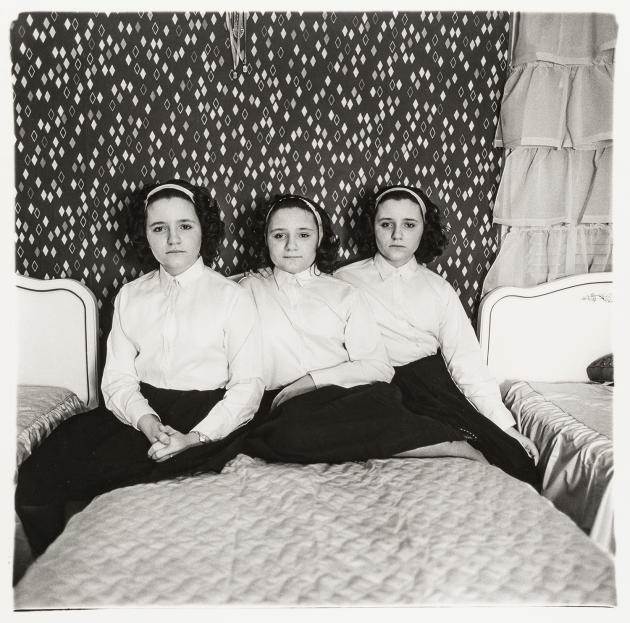Decades after they were taken, the images of Diane Arbus (1923-1971) continue to challenge with their sharpness and their singular presence. In less than fifteen years, the American photographer has imposed a new way of making a portrait: he is no longer there to honor or embellish the model, but to capture a moment of fragility, a crack, seize the moment when the appearance and the desire to appear, the social role and the personality collide.
Raw, direct, often lit with a flash that makes the scene theatrical, his frontal photos, enclosed in a square that has become his favorite format, reveal in the models a complexity and a tragedy that they themselves seem to ignore, to share them with a hypnotized, frightened, upset spectator. “I think there are things no one would see if I didn’t photograph them,” said the photographer, hailed today by a spectacular exhibition at the LUMA Foundation in Arles.
After working as a stylist with her husband, who took fashion photos, Diane Arbus went solo in 1956, finding an income in the magazine press, an outlet for her images and access to people who interested her, met at haphazard streets or actively canvassed.
All her life, the photographer raised in a privileged environment in New York has been interested in subcultures, communities, minorities and the margins: circus artists, bodybuilders, handicapped people, winners of beauty or dance contests, scouts , transvestites, nudists, twins… To the point of being cataloged too quickly as a “photographer of freaks “, ” monsters “. A reputation for attraction to the bizarre and the morbid maintained by her bouts of depression and her tragic end (she committed suicide in 1971).
Unconventional and familiar
In fact, Diane Arbus has mostly focused on blurring the definition of normality, gender and identity, highlighting how ordinary seemingly radical lifestyles are and how strange can be, conversely, all that which is reputed to be respectable: a screaming baby, a couple on a bench, identically dressed twin girls. With Diane Arbus, all individuals are on the same level, united by the same desperate effort to find their place within humanity.
His beings are all out of the ordinary and familiar. The photos of the “Jewish giant”, Eddie Carmel, taken over ten years, focus on behind the scenes of his life, on his complicated relationships with those close to him: he thus poses, in 1970, in an image where, like Alice in the Land of wonders, he seems to have grown to the point of towering over his father and mother, who are outmatched in every way. The “Russian dwarf” is also presented in a bourgeois salon, with two friends, and not on stage.
You have 28.1% of this article left to read. The following is for subscribers only.
